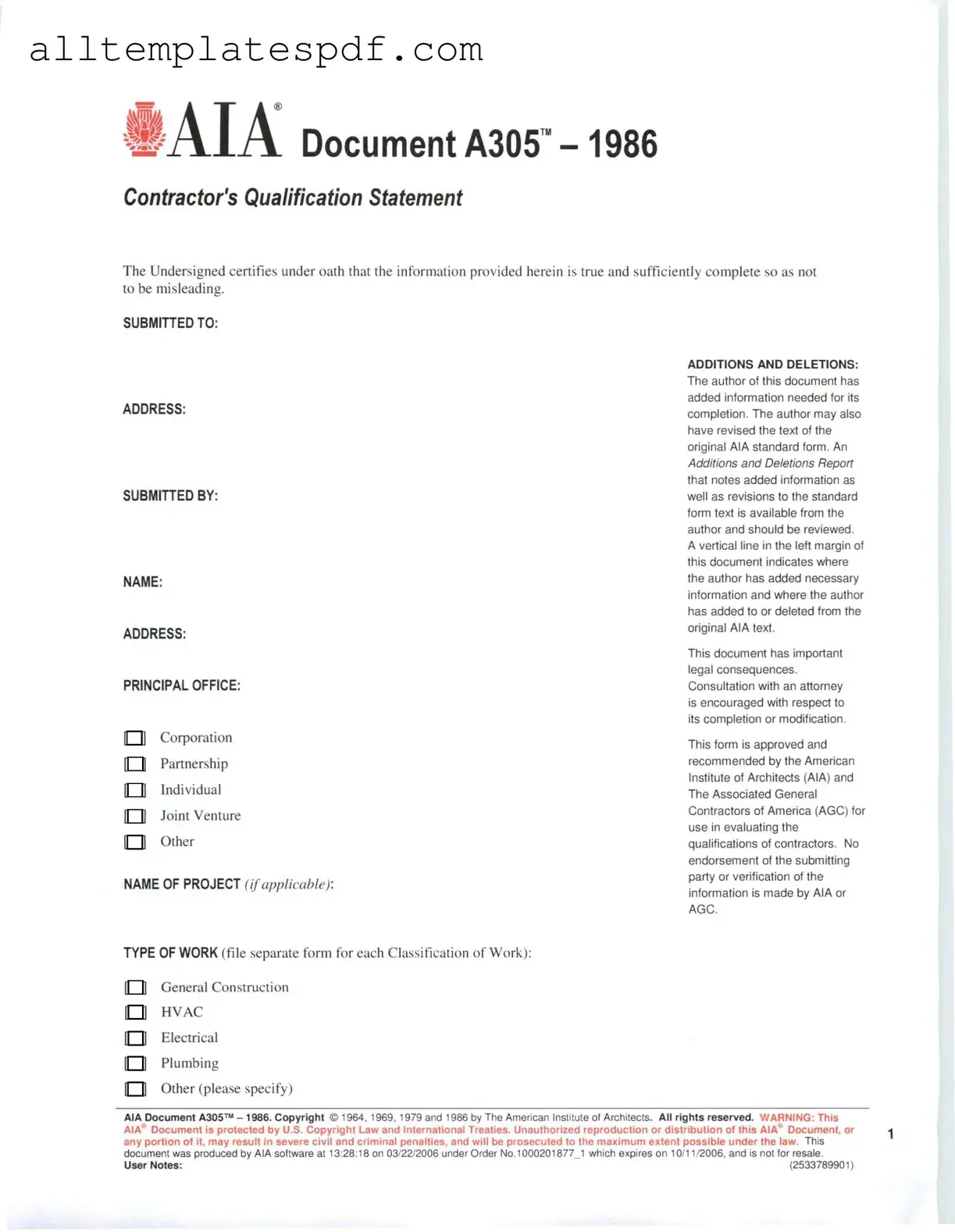Filling out the AIA A305 form can be a straightforward process, but many people make common mistakes that can lead to complications. One frequent error is not providing complete information. Each section of the form is important. Missing details can cause delays or even result in rejection of the application.
Another mistake is neglecting to update the form with the most current information. Individuals often use outdated forms or forget to revise their details. Always ensure that the information reflects your current situation, including financial status and project history.
Many people also fail to double-check for accuracy. Simple typos or incorrect figures can have significant consequences. It’s crucial to review the entire form carefully before submission to avoid these pitfalls.
Some individuals overlook the importance of providing supporting documentation. The A305 form requires backup information to validate the claims made. Failing to include this documentation can weaken your application and may lead to denial.
Another common error is misunderstanding the purpose of the form. The AIA A305 is intended to gather specific information about a contractor’s qualifications. Misinterpreting the questions or providing irrelevant information can detract from the overall effectiveness of the submission.
People often forget to sign and date the form. A missing signature can render the entire application invalid. Always ensure that you sign and date the form before submitting it.
Some applicants do not keep copies of their submissions. This can lead to confusion or issues later on. Keeping a copy for your records is a smart practice that can save you time and trouble.
Lastly, many individuals fail to adhere to submission deadlines. Each project may have different timelines, and missing a deadline can affect your eligibility. Make a note of all important dates to ensure timely submission.
